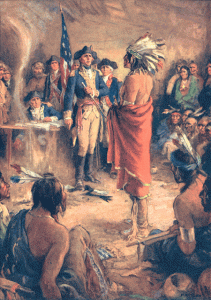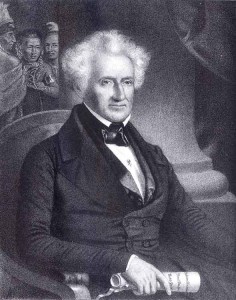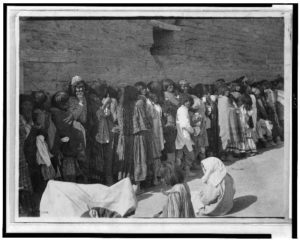Though the U.S. population usually supported freedom passionately, the government and its people could also entertain strong paternalistic views. Eugenics laws (see last few posts) were created in part due to a feeling that certain authoritarians “knew best” which traits were good for the country and which were not. More than that, those authoritarians felt compelled and and justified in forcing those views on others. Besides the so-called “defectives” who were the targets of eugenic laws, the country’s paternalism extended to other groups like females, immigrants, and non-Caucasion races.
When European colonists first met with Native Americans, their representatives treated tribes as sovereign nations and negotiated individual treaties with each group. Once the American nation formed, the country’s Indian Department became the responsibility of the Secretary of War. As activities between the new nation and Native Americans increased, the Secretary of War became overwhelmed by paperwork. In 1822, the Secretary eventually separated all duties specifically concerned with Native Americans into a separate department and asked Thomas L. McKenney (the Superintendent of Indian Trade) to run it. He declined. In 1824, Congress established the Bureau of Indian Affairs, and this time, McKenney was persuaded to accept a position as its head. Native Americans almost immediately began to lose ground as distinct nations and increasingly fell under the power of a government who “knew best” for them.
______________________________________________________________________________________



